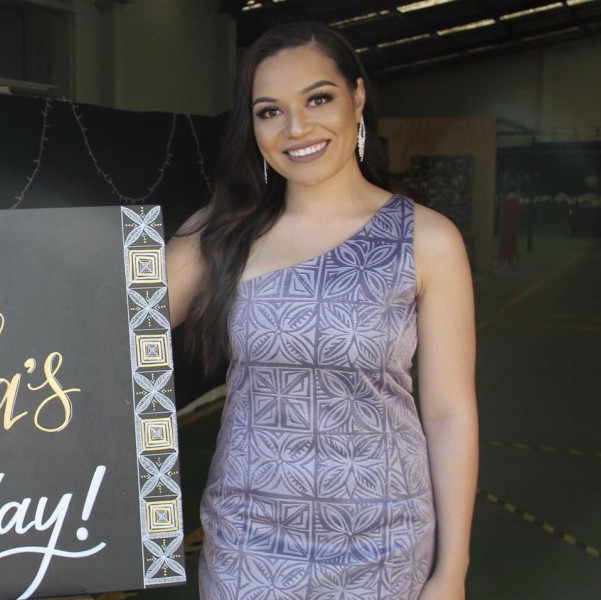Recognising Pacific youth as a diverse and ever-changing group
Recognising Pacific youth as a diverse and ever-changing group

Leorida Peters jumped at the chance to join Kau Tulī, as she saw it as a prime opportunity for Pacific youth voices to be heard at a policy level.
The northern region representative of Samoan heritage was born and raised in Auckland, and she brings a rare perspective to the group made up of six young Pacific leaders from around New Zealand.
Kau Tulī plays a key role in representing Pacific young people by claiming a seat at the table to help influence and shape decisions made for Pacific in Aotearoa.
It also helps to inform and shape the Ministry for Pacific Peoples’ (MPP) response to achieving goal four of Lalanga Fou and the Pacific Aotearoa vision of having Confident, Thriving and Resilient Pacific young people.
Leorida says it is paramount to recognise Pacific young people as a diverse and ever-changing group.
Q. Can you describe your background?
A. My parents hail from the one and only nation of Samoa of which I take huge pride in. On my paternal side I come from the village of Vailoa and on my maternal side the village of Vailima, both in Upolu. My family migrated to New Zealand and settled in Porirua, Wellington where a lot of them still live today. However, in the early 90s, my grandmother and her children made the move to Auckland where I was born and raised. I attended Auckland Girls' Grammar School and am grateful for the education and community it has given me.
Q. What are you currently doing?
A. I am currently studying a conjoint Bachelor of Arts and Bachelor of Law degree at The University of Auckland. Early last year, I founded an initiative called The Mafaufau Project which aims to educate and engage our Pacific people particularly youth with mental health issues. I was motivated to establish Mafaufau because of my own struggles with mental health and how much I did not know. It made me realise there is not a lot of access to information for young Pacific people. Therefore, I started to bring the conversation to high school students through workshops and community events.
Q. Why did you want to get involved with Kau Tulī?
A. I became involved with Kau Tulī because I saw it as an opportunity to have Pacific youth voices heard at a policy level. It is so important to recognise these young people as a diverse and ever-changing group. Most youth advisors only represent their own lived experiences - not those who don’t get the chance to discuss matters that affect them. As a Kau Tulī member, I want to not only impart my own knowledge but bring forth the insights of those who I meet that do not have the same platform.
Q. What role have you played in the initiative?
A. So far due to COVID-19 there are obvious restrictions to exercising our roles, but I like to think of myself as the group expert in TikTok. Hopefully when things revert to normal our group will be able to work more physically in supporting each other's ideas. For now, I have been developing ways to engage Pacific youth with mental health information that can be readily available to them.
Q. What outcomes do you hope to achieve with this initiative?
A. The outcomes I hope to see from Kau Tulī is positive feedback from youth that have benefited from our projects. We each have a different target audience and focus this year and so more involvement of youth in those areas would be awesome. I do not have any expectations to measure the success of Kau Tulī, but if a small group or even one person in our community found what we achieved this year helpful then I will consider that a job well done.
Q. What does a Pacific Aotearoa of confident, thriving, resilient young people look like to you?
A. When I reflect on Lalanga Fou Goal 4 - I think about more young people in different areas of New Zealand doing different things. For many of our Pacific adults, the way was already paved for them by our first-generation migrants. Whether that was University or well-paying jobs, they had a specific vision throughout their youth. But going forward, I hope to see more Pacific faces in all facets of the workforce, not just the areas we already dominate. It is my hope we can support young Pacific people to reach the dreams they have for themselves, not only the aspirations of our forefathers and mothers. This is what thriving, confidence and resilience in our brown youth means to me.
Q. Where do you hope to see yourself in five years?
A. Hopefully in five years’ time, I am employed in a job where I can wear my identity to help advocate and serve the needs of our Pacific people. I also hope to be just as good at TikTok (or whatever the coolest app is by then).
